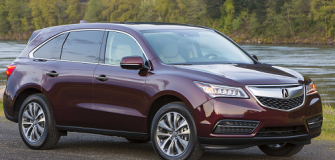10 Safe Trailer Towing Tips

If you’re looking to do some towing this summer, check these safety tips off your list to get off to a safe start.
1. Get the right vehicle
First thing’s first when you’re towing…you need the right vehicle. You must make sure your vehicle has enough towing capacity to safely handle the trailer and load that you want to tow. Towing safely requires knowing a few important numbers from your owner’s manual including the towing capacity, maximum tongue weight, maximum weight-carrying capacity and gross combined weight rating (GCWR). Depending on these numbers, you may also need extra equipment, such as a weight-distributing hitch or sway control device.
2. Make sure you’re roadworthy
Before you start towing, ensure both your tow vehicle and your trailer are roadworthy. Check your vehicle manual for the proper tires pressures and inspect your hoses, belts, and fluid levels. On your trailer look at the tires, trailer spring hangers and springs. If anything is amiss here, you’ve got some maintenance to do before towing.
3. Get your weights straight
Your towing weight and your tongue weight are both important numbers to consider when you’re setting up your trailer. The tongue weight is the measurement of how much of the trailer’s weight rests on the hitch. This should be between 10-15% of the total weight of the trailer. A vehicle’s gross combined weight rating (GCWR) is arguably the most important number. The GCWR is the total weight allowed for the entire rig, including vehicle, occupants and cargo, and everything in and on the trailer.
4. Know your sizes
Always make sure your hitch, trailer ball, and drawbar are the proper size to work together. The size of the ball is stamped on the top of the ball itself, and the trailer coupler will have the size of the appropriate ball stamped onto it as well. Failure to match these up could result in the trailer popping off during towing.
5. Pack and secure
Getting your trailer packed properly involves securing all your cargo, but it’s also important how you distribute the weight of your gear. About 60% of the load should be placed over the front half of the trailer and should be even between the right and the left sides of the trailer. All cargo should be secured to make sure it doesn’t shift around during the ride.
6. Mirrors and lights
After you’ve set up your tow vehicle and your trailer, you need to check and adjust your vehicle mirrors to ensure that you can see everything you need to see. Ideally you need to be able to see down the entire length of the trailer. If your vehicle’s standard mirrors don’t allow for this you can get extended side mirrors.
Your lights are crucial to safe towing as they are your means of communicating with other drivers on the road.
After connecting your trailer lights, check to make sure the brake lights, right and left turn signals, running lights, and hazard lights work.
7. Follow safely
Accelerating, slowing down, and changing lanes all take longer when you’re towing. To stay safe, a good rule of thumb is the 4 second towing rule. In good driving conditions, leave at least four seconds between your vehicle and the one ahead. If road conditions are bad, increase that distance to 6 seconds.
8. Know how to handle it
Handling your vehicle is a tougher job with a trailer attached. Change lanes slowly and carefully, allow longer distances for passing, and use turnouts when you can. When you’re backing up with a trailer it’s a little confusing for the brain. Try putting your hand on the bottom of the steering wheel and moving it in the direction you want the trailer to go.
9.Stop, check, inspect
Once you’re on the road, stop and do a load check. Regardless of how well you secured your cargo, tiedowns will always loosen as you drive. After 10 miles of travel, stop and tighten your load, and do a visual inspection of your trailer and hitch set up just to make sure everything is still where it should be.
10. Go by the written manual
Always follow the letter of your owner’s manual when setting up your towing rig. Exceeding your towing capacity or not following specific instructions when it comes to certain weights and limitations is not only dangerous for you, but if there is an accident it could result in you being held liable for damages to another party.





